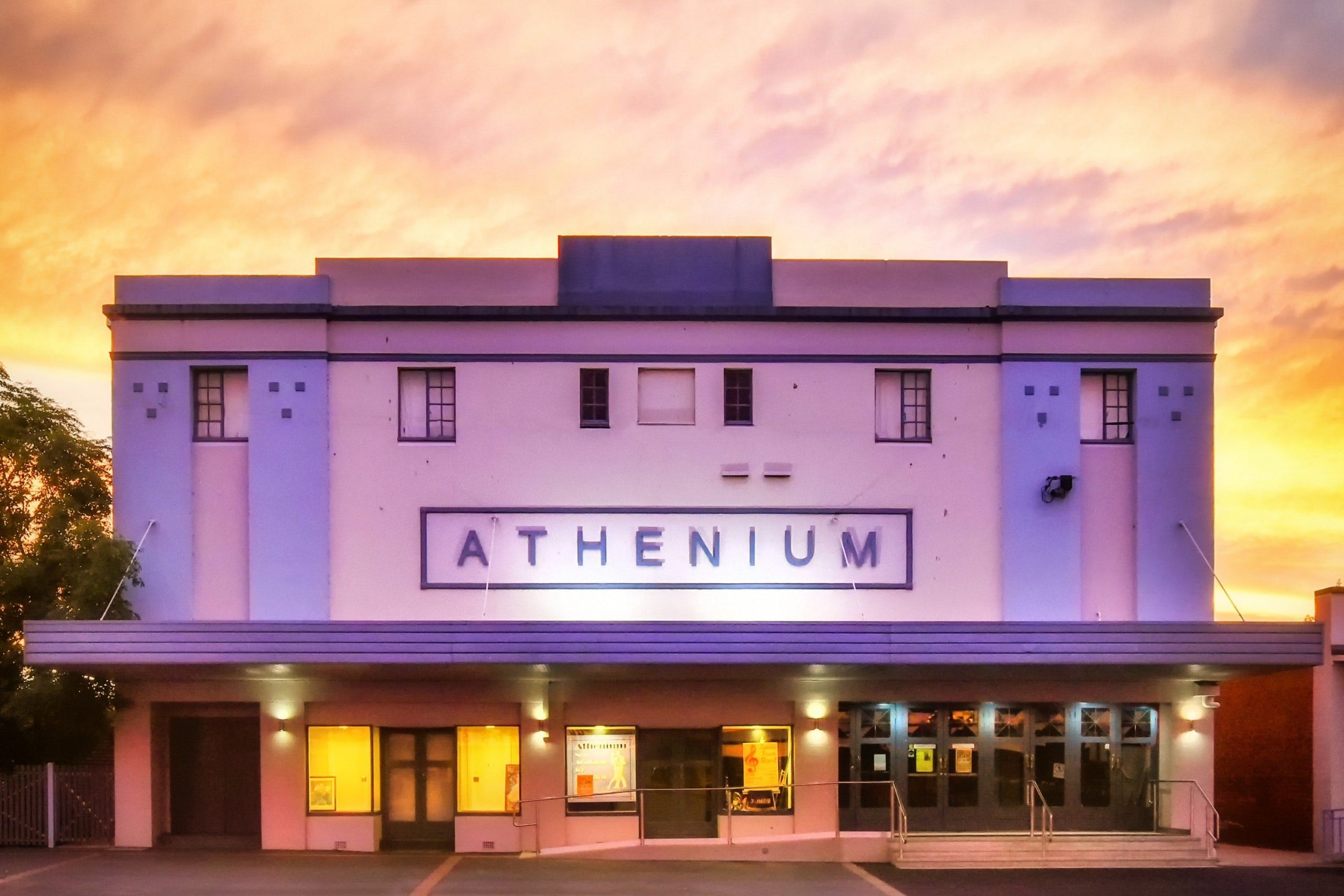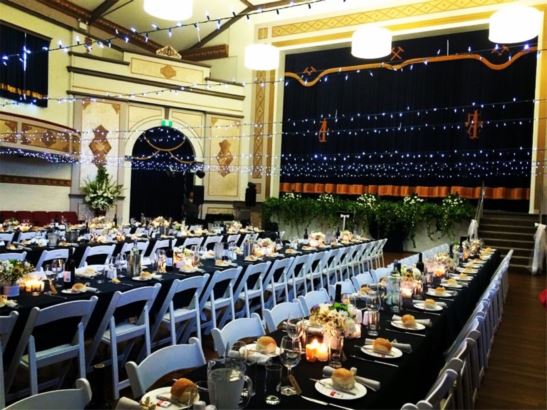Approval was given for the Erection of the Athenium Theatre Junee on the 1st May 1929. The architects, Kaberry and Chard, wrote to say the Theatre was about half completed by early July. It was officially opened on the 10th October 1929 for “general entertainment purposes”.
The movies were screened originally on a Tuesday and Wednesday, with the addition to include Friday and Saturday nights in 1934. By 1938, movies where shown six days a week – from Monday to Saturday. Around 7 occasions a year there would also be special events at the Theatre which included: church balls, plays presented by the ambulance, Sorley’s touring variety show as well as McKays. The Theatre was also utilised during the daytime, its flat floor in the stalls being suitable for dancing lessons.
Picture theatres in those times did not possess their own candy bar. Often there would be a small shop in the theatre building that was a milk-bar, but this could rarely cater for the crowd that rushed out at interval between the two feature films.


On 10 October 1950 the Theatre was renamed the “Broadway”. From 1959 the Theatre seemed to deteriorate with a long list of repairs not being completed and attendees for films had. On 21 December 1970, the Broadway Theatre Junee closed its doors. The building remained closed until a local community organisation purchased it and sought its reopening. This organisation – Junee and District Development Association (JADDA), was responsible for fund-raising, undertaking repair work, and conducting the theatre as a sports and entertainment venue for over a quarter of a century.
The Theatre, in its current state, stands out and possesses landmark quality. The layering of the vine and trellis decoration uniquely exhibits the influence of the management of a Greek immigrant. It possesses social significance for Junee, being one of the very few and first towns in NSW where the population came together as early as 1976/1977, to buy the town’s theatre for community use.
In NSW (excluding Sydney and Newcastle) there were 351 cinema venues in 289 towns. Less than 10 per cent “exist” as theatres (there is only 31 remaining). Only 11 of those exist with some form of obvious decorative interior and theatrical exterior. The Theatre is one of those eleven left that existed in 1951. Of the 57 theatres designed by Kabbery and Chard in NSW, only three remain without being demolished or considerably adapted. Those three are in Junee, Tumut and Leeton. Junee and Leeton possess the side-of-stage splayed false decorative walls used as a feature by the architects.
With its wide frontage and substantial, imposing, but modest façade, the Athenium Theatre is a superior building to most constructed. It is an excellent example of the quality of design – as good as the architects produced for larger towns.